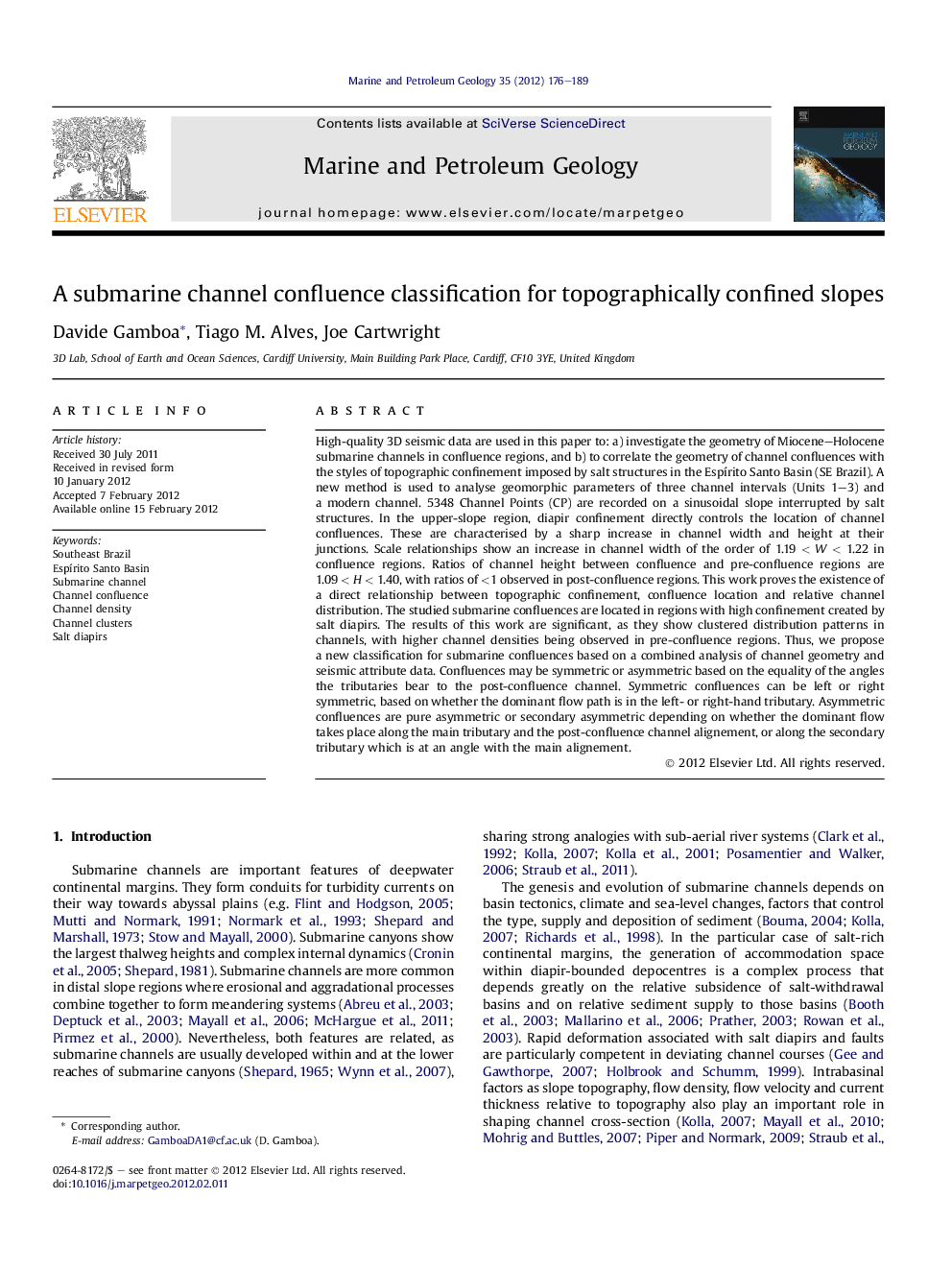| Article ID | Journal | Published Year | Pages | File Type |
|---|---|---|---|---|
| 4695863 | Marine and Petroleum Geology | 2012 | 14 Pages |
High-quality 3D seismic data are used in this paper to: a) investigate the geometry of Miocene–Holocene submarine channels in confluence regions, and b) to correlate the geometry of channel confluences with the styles of topographic confinement imposed by salt structures in the Espírito Santo Basin (SE Brazil). A new method is used to analyse geomorphic parameters of three channel intervals (Units 1–3) and a modern channel. 5348 Channel Points (CP) are recorded on a sinusoidal slope interrupted by salt structures. In the upper-slope region, diapir confinement directly controls the location of channel confluences. These are characterised by a sharp increase in channel width and height at their junctions. Scale relationships show an increase in channel width of the order of 1.19 < W < 1.22 in confluence regions. Ratios of channel height between confluence and pre-confluence regions are 1.09 < H < 1.40, with ratios of <1 observed in post-confluence regions. This work proves the existence of a direct relationship between topographic confinement, confluence location and relative channel distribution. The studied submarine confluences are located in regions with high confinement created by salt diapirs. The results of this work are significant, as they show clustered distribution patterns in channels, with higher channel densities being observed in pre-confluence regions. Thus, we propose a new classification for submarine confluences based on a combined analysis of channel geometry and seismic attribute data. Confluences may be symmetric or asymmetric based on the equality of the angles the tributaries bear to the post-confluence channel. Symmetric confluences can be left or right symmetric, based on whether the dominant flow path is in the left- or right-hand tributary. Asymmetric confluences are pure asymmetric or secondary asymmetric depending on whether the dominant flow takes place along the main tributary and the post-confluence channel alignement, or along the secondary tributary which is at an angle with the main alignement.
► Submarine channel tributaries have confluences at equal or unequal levels. ► Sharp width increases are observed at submarine confluence points. ► Tributary height variations are preferentially gradual. ► High channel densities and vertical stacking characterise pre-confluence regions. ► Pure asymmetric confluences were identified on distinct submarine channels.
